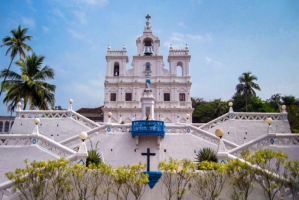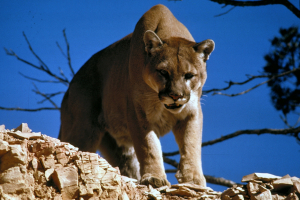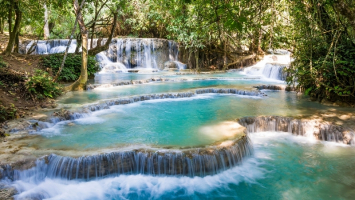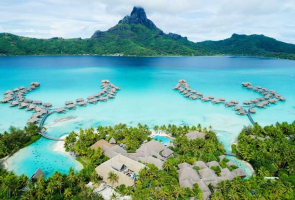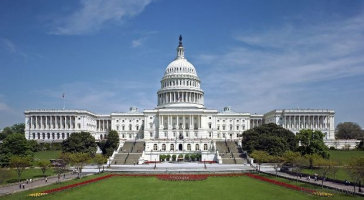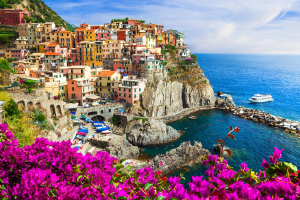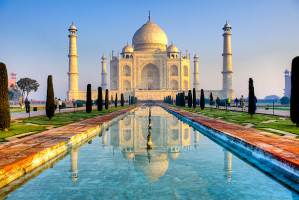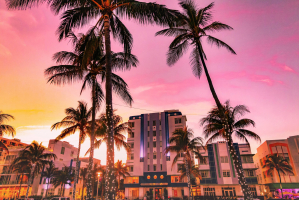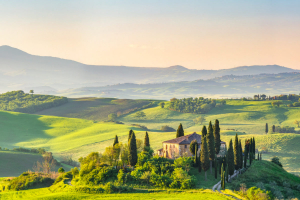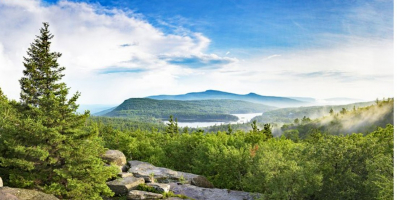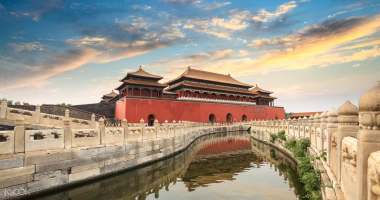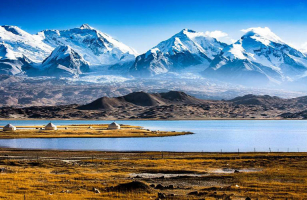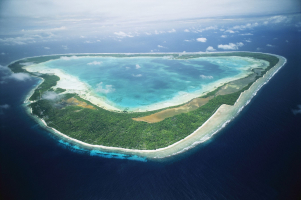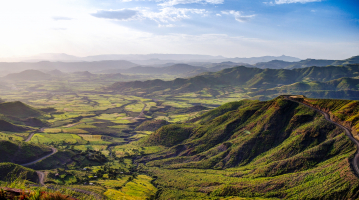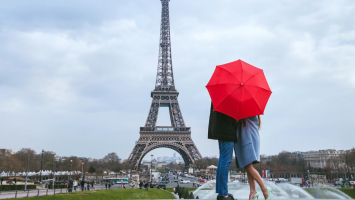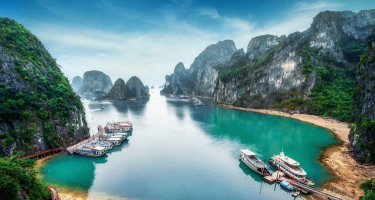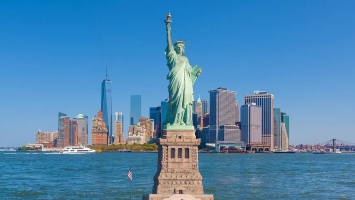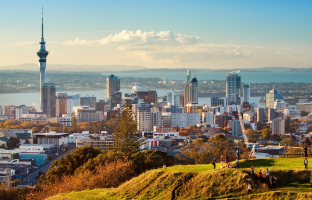Top 15 Most Mystical Places in Asia
Mother Earth continues to astound us. There are unsolved mysteries in every nook and cranny of the world. Whether these locations are popular tourist hotspots ... read more...or difficult to get to, our curiosity about their mystical allure never wanes. Asia's undeniable appeal as a spiritual retreat is unmatched when it comes to the world's most mystical locations. Most of us are drawn to Asia's magical and mystical charm. Visitors were frequently curious about the continent's supernatural forces, superstitions, and beliefs. These amazing mystic locations in Asia must be considered as a part of your next trip if your soul yearns for strange things.
-
If you've never heard of Phraya Nakhon Cave, get ready to have your mind blown by this extraordinary location. This impressive sinkhole cave is one of Thailand's most enigmatic landmarks. Phraya Nakhon does have one thing no other cave in the world has, but it's not one of those magnificent sinkhole caves that are located beneath lakes and have waterfalls gushing into them from the surface. The remarkable aspect is that it has a Thai Pavilion that is 125 years old.
It takes an exhausting hour of hiking through rocky terrain and verdant forests to reach the cave. The stunning sight of the Kuha Karuhas Pavilion greets you as soon as you enter the cave, soothing both the eyes and the soul. King Rama V is the honorary patron of this man-made marvel. You will undoubtedly be in awe of the breathtaking scenery, which seems like it belongs on a movie set.
The Khao Sam Roi Yot National Park is traversed during the entire hike. So be sure to apply insect repellent to your skin. Additionally, the terrain is unforgiving and rugged, so wear sturdy footwear.Getting there: 45-minute car or scooter ride from the beach town, Hua Hin.
Entry price: 200 Baht ($6 USD) per adult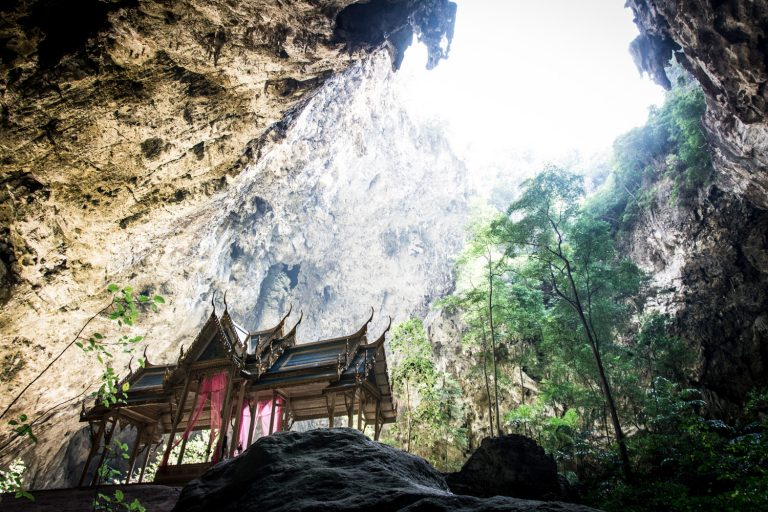
Pinterest 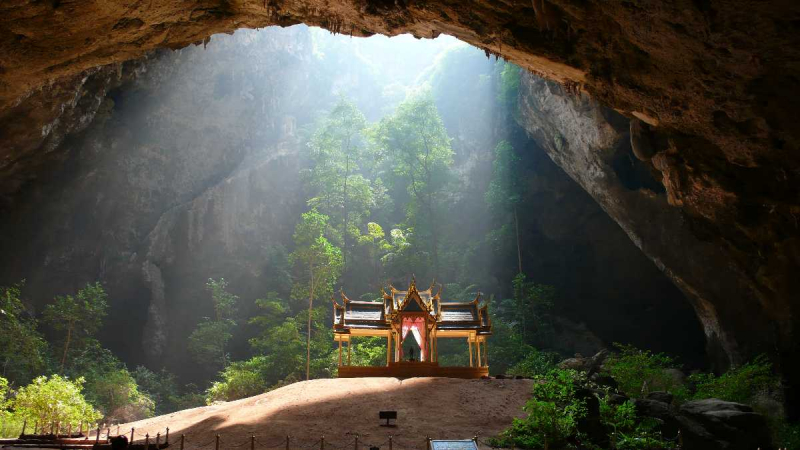
wikimedia -
The mystical mountain of Phnom Kulen is about two hours drive from Siem Reap. There are popular attractions at the mountain's base, but what you will find at the summit will astound you. It is not a popular tourist attraction that you will find on a map. However, this location is Cambodia's best-kept secret and does not even have a name. The mountain's summit is adorned with a lovely shrine. It is believed that if you make a wish in front of the shrine, Lord Buddha will grant it.
Visiting the location with a local guide is the best way to fully experience the magic. Especially with someone who is aware that this shrine exists. You will be told legends about mythical Sadhus (holy men), who inhabit trees and practice magic, animal communication, and religious rituals while dressed entirely in white.
Reaching the summit of Mount Kulen, which is covered in gold and silver shrines built by people who had their wishes granted by Buddha, gives off an ethereal and otherworldly feeling.
To fully take in all the breathtaking sights the mountain has to offer, you can also spend the night at Phnom Kulen. Try staying with a local family in their home- it's truly the most rewarding and humble experience, and you get to eat delicious home-cooked Khmer food.
Getting there: two hours drive from Siem Reap
Entry price: $20 per adult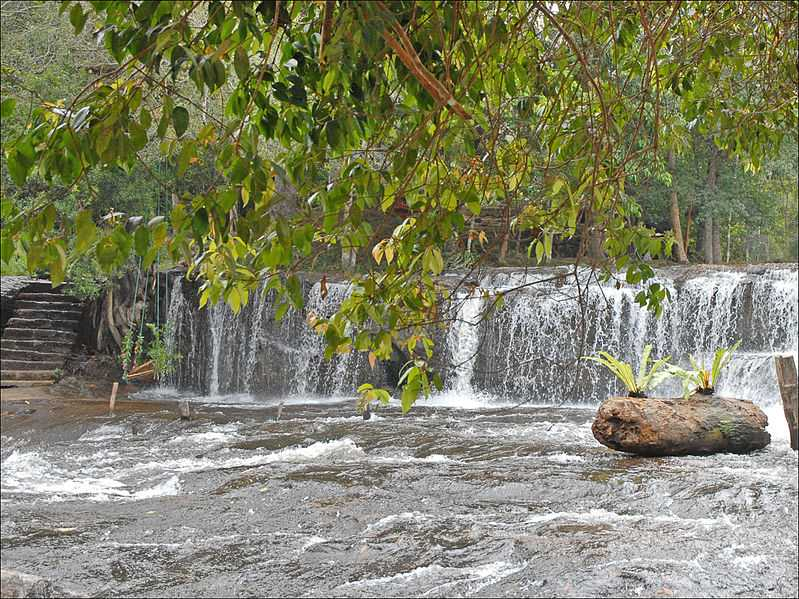
wikimedia 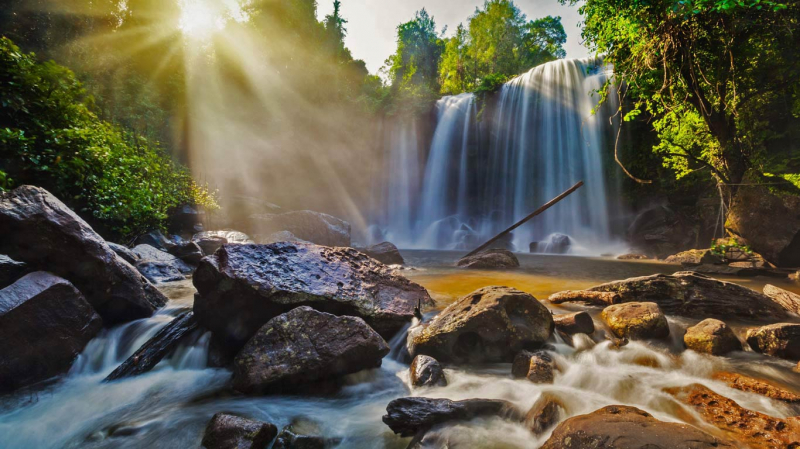
Peapix -
In the central Chinese province of Chongqing, high on the hills, is a strange ancient "City of Ghosts" that is thought to be the entrance to the afterlife. The Bridge of Helplessness, Ghost Torturing Pass, and Last Glance at Home Tower are three of the complex tests that enable the deceased to transition safely into the afterlife.
The city was founded almost two thousand years ago, possibly during the Han Dynasty. According to legend, two imperial officials named Yin and Wang escaped the monotony of their jobs by withdrawing into the mountains to practice Taoism, where they eventually attained immortality.
The place's take on the underworld and all that it entails, including demonic stone carvings, wraiths, ghosts, and a general sense of eeriness, is due to the fact that the combination of their names, Yinwang, actually translates to "King of Hell."
This city, which is perched atop Ming Mountain on the banks of the Yangtze River, is teeming with monasteries and shrines that feature demonic imagery related to hell. The locals here adhere to a synthesis of Taoist, Confucian, and Buddhist teachings and think there is life after death. They also think that the dead can still see and interact with living things. An unfinished, eerie hotel in Fengdu that assumes a human form is one of the city's strangest sights.Because the paths are uneven, it is critical to wear comfortable shoes. The annual temple fair, which takes place every March, is well worth a visit.
Getting there: Via boat on the Yangtze River Cruise or train from Chongqing (1-hour journey)
Entry fee: 100¥ ($15 USD) per adult
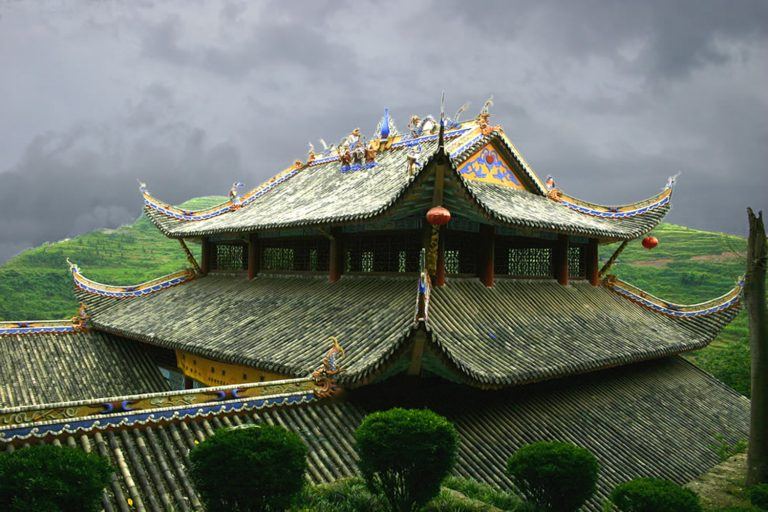
Pinterest 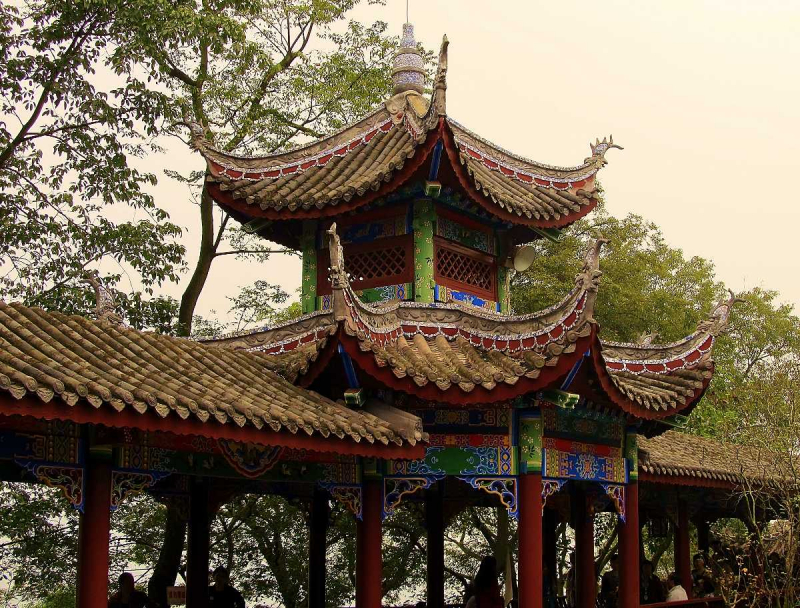
Flickr -
Zhangjiajie is a prefecture-level city in Hunan Province's northwestern region. This region is a haven for outdoor enthusiasts, with some of China's most breathtaking scenic viewpoints. There are numerous waterfalls, pools, caves, and towering peaks to explore, and numerous viewing decks allow visitors to capture the beauty from various angles. Zhangjiajie, famous for its foggy peaks and lush greenery, has come to represent the Chinese aesthetic nature in many forms of art. It has inspired generations of painters and visionaries all over the world to create the most beautiful works of art.
This natural formation can be found in Tianmen, Zhangjiajie's highest mountain. Tianmen, at an elevation of 4980 feet (1518 meters), has been a source of wonder for the Chinese for thousands of years. Its mystical atmosphere and one-of-a-kind conditions have greatly aided in this regard. Because of Tianmen's high altitude, sunrise on the mountain occurs 30 minutes earlier than in the surrounding cities. "Tianmen is known as an endless sky without darkness" because the sunset occurs later, up to 45 minutes later.
Another factor contributing to this location's fame is the mountain's distinctive natural arch. Before the back side collapsed in AD 263 and the gate was formed, it was initially a cave. Numerous people are drawn to the holy temple on the mountain in Tianmen, which has developed into a well-liked location to pray for a secure and healthy life.
Many visitors have described Tianmen Mountain as "one of the most beautiful mountains in the world." The breathtaking views, including 'Heaven's Door' and the 99 Bends, vertical cliffs, the thrilling cliff-hanging walkway and glass skywalk, and the world's longest cable car ride make it unquestionably one of China's best mountains to visit. Climb the 'Stairway to Heaven!'
The road leading to Tianmen Cave features the infamous "99 Bends," or 99 sharp curves. The cable car is the best vantage point from which to view and photograph these bends. The road was constructed with tourists in mind, and it transports visitors from the mountain's base to its summit and Tianmen Cave. Tourist buses transport visitors to Tianmen Cave from the midway cable car station via some of these 99 bends. On the way, the bus doesn't stop. The journey to the cave takes about 20 minutes. The ride is not advised for those who get motion sick easily because it has many sharp turns along cliff faces.
The best way to get to the mountain is by cable car. The longest aerial tramway ride in the world, covering more than 7 kilometers in about 30 minutes. The final section of the cable car climbs at a steep 37 degrees over precarious cliffs to one of the mountain peaks. Near the bus and train stations is where the cable car begins its journey. It is frequently extremely busy, so standing in line is common. In the summer it departs at 7:30, and in the winter it departs at 8:00.The scenery from the cable car is spectacular: lush mountain peaks, the 99 Bends (99 sharp curves on a road leading up to the mountain peak), and deep valleys. Our guide will accompany you in the same cable car that holds eight people.
This mountain's summits were where the walkway was constructed, clinging to the sheer cliff faces. The walkway is roughly 1.6 kilometers long and rises to a height of 1,400 meters. The cliffside loop lasts approximately 1 1/2 hours. A hanging bridge connecting two peaks is located at the end of the walkway. Along the walkway, it is constantly crowded and busy. For a place to take pictures, you might need to engage in conflict. You must avoid the crowds if you want to take quality pictures and take in the highlights.
The Walk of Faith, Tianmen Mountain's first glass skywalk, debuted in November 2011. On the west side of the mountain, it has since become a must-see tourist destination. It conveys the exhilarating sensation of walking in the sky. It's definitely not for the weak of heart. It's interesting to see people crossing the cliff leaning against it out of fear of the height. On gloomy days, it is simpler to cross because you can't see what's below, but the walkways' thrilling feature is lost. The mountain top is typically covered in thick fog if it rained the previous day. To have the best experience, it is advised that you check the weather forecast before leaving. When the glass walkways are covered by ice and snow in the winter, they close.
Getting there: take a tourist bus and train, from the south of Zhangjiajie city
Entry fee: March–November: 258 yuan (42 USD); December–February: 225 yuan (37 USD), children under 1.2 meters free of charge, children 1.2–1.5 meters half price; students with student ID 158 yuan (26 USD); seniors (60+) 158 yuan (passport needed as evidence).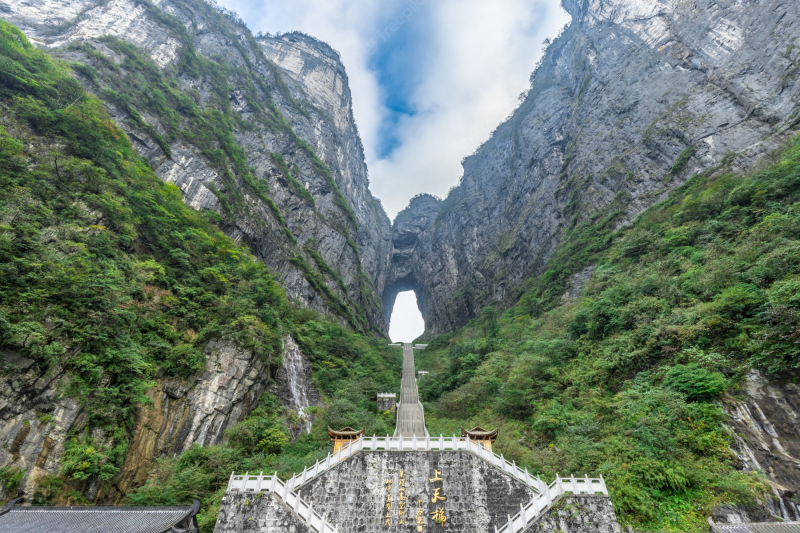
Freepik 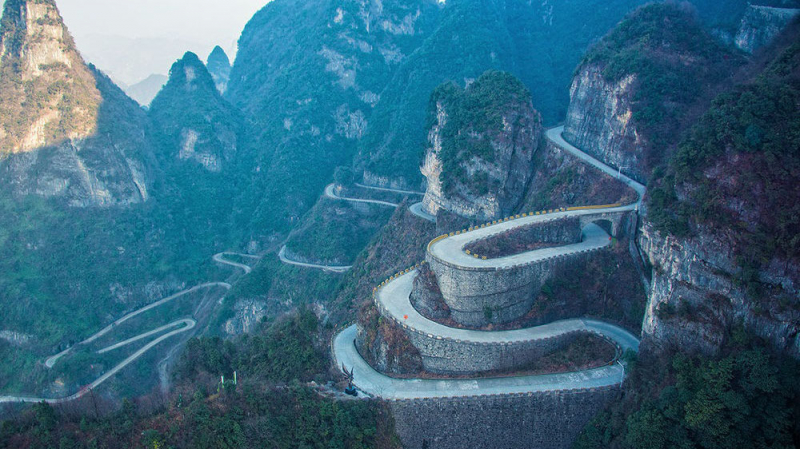
Best China Tour -
The massive Angkor Wat is spread over 208 acres and was built in the 12th century by King Suryavarman II. It is one of the seven "Wonders of the World." Aside from the insanely beautiful architecture and scale of this ancient attraction, it is also quite mysterious. The sandstone bricks used to construct the Wat weighed over 1,500 kgs, and to top it all off, the temple was surrounded by dense forests, with the only source of stones coming from kilometers away!
As a result, various explorers and locals suggested that giants or gods may have built the temple. The various claims that the stones were actually transported via hundreds of canals were finally put to rest when a recent study refuted this theory.
See the sunrise at the temple. You will not be disappointed if you arrive at the location around 5:30 a.m.
Getting there: The distance between Siem Reap International Airport and Angkor Wat is 6 kilometers. There are two ways to get there: taxi or remork (the local tuk tuk). An airport taxi is the quickest and least stressful way to get to Angkor Wat. The ride is €10 (KHR 42,000) and lasts approximately 10 minutes. The remork, on the other hand, is slightly more affordable, costing €8 (KHR 33,500) per ride and taking roughly the same amount of time to get you from Siem Reap Airport to Angkor Wat.
Entry fee: 37-104 USD depending on the type of pass and whether you purchase it online or in person
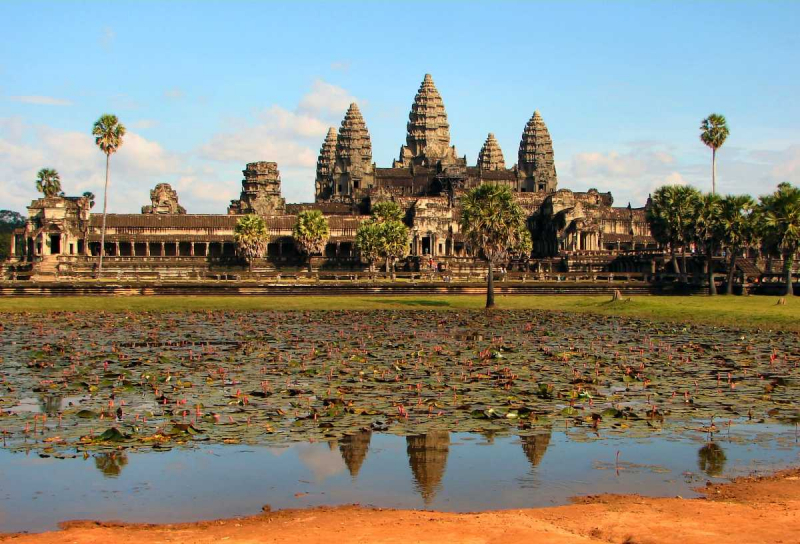
wikimedia 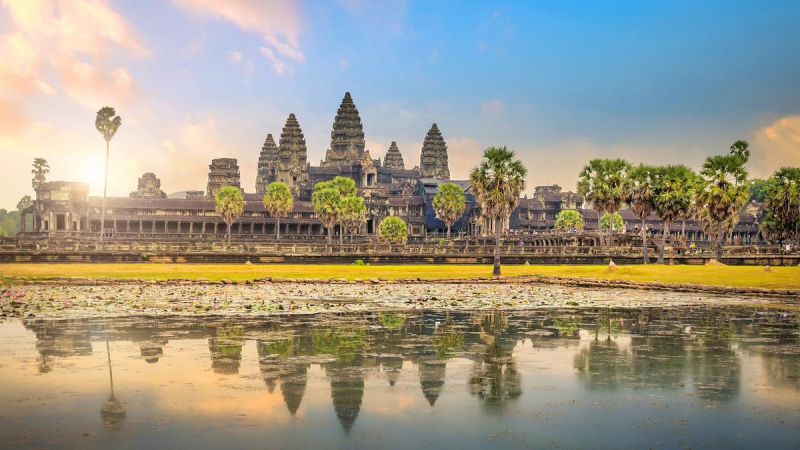
Wikipedia -
Thangtong Gyelpo constructed Dungste Lhakhang in 1433. It is said that the monument was built on the body of a monster that was causing trouble for the locals. There are mysterious stories about this location, and locals believe that the divine power of the temple will keep the demon from resurrecting.
The structure is designed in the shape of a diagram-mandala, with different floors representing the earth, heaven, and hell. The horror-inspired frescoes on the walls dazzle visitors and add to the eerie allure of this location. Dungste Lhakhang is meticulously preserved, and entry to the landmark requires special permission from the authorities.
When visiting Dungtse Lhakhang, it is best to bring a flashlight because there is no light inside the temple.
Getting there: Dungtse Lhakhang is conveniently located just a 10-minute walk from Paro's main town, making it accessible to visitors. One kilometer separates Paro from Dungtse Lhakhang. Foreigners have two ways to get to Paro: by car and by plane.
Entry fee: No Entry Fees
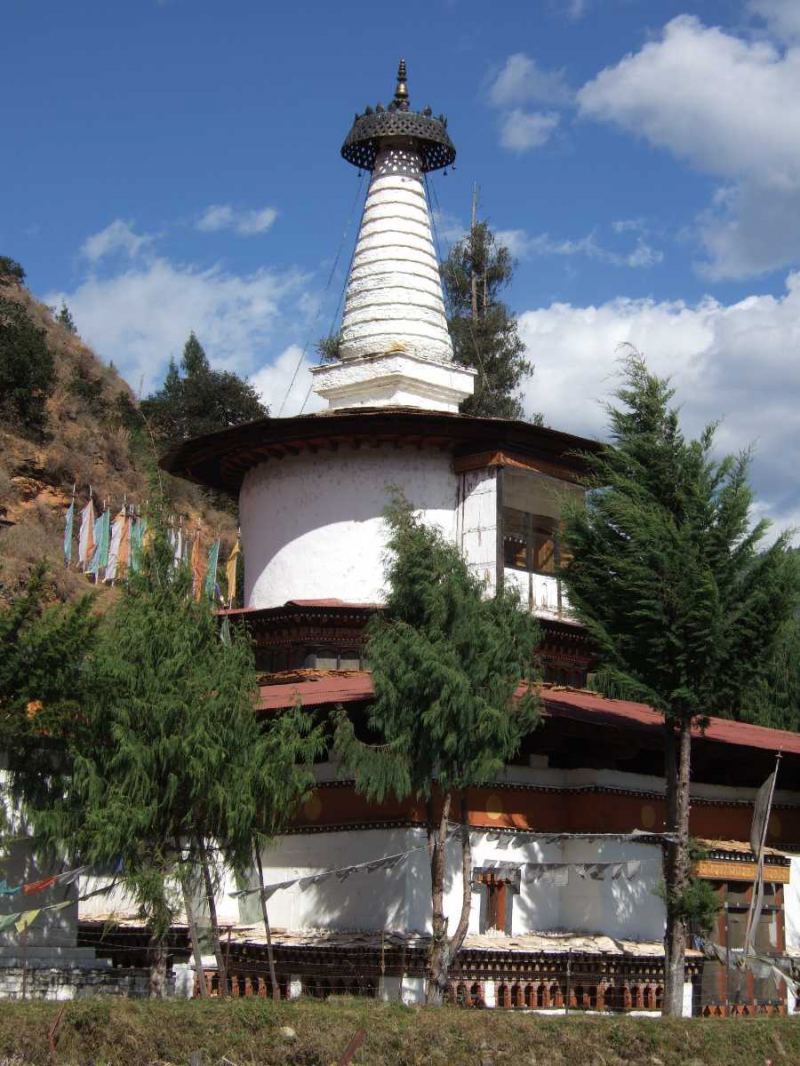
wikimedia 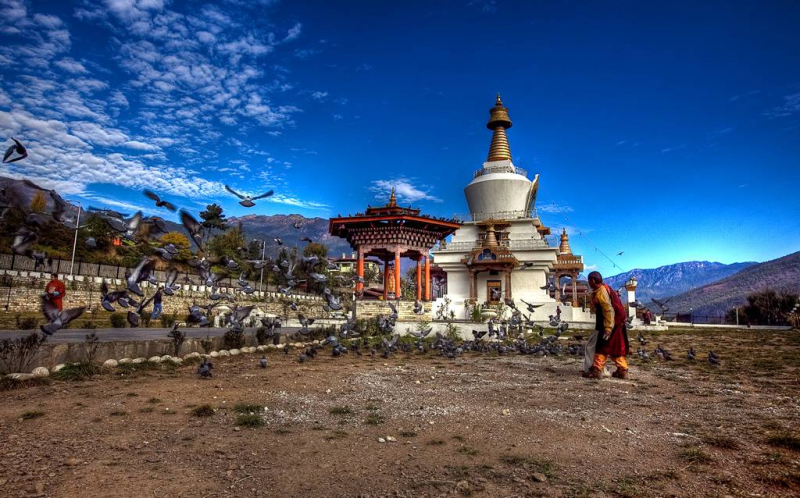
North Bengal Tourism -
When in Kandy, you must visit the Temple of the Sacred Tooth Relic. It is a place of worship established in the 16th century AD and is the most revered site in Sri Lanka. It is locally known as the Sri Dalada Maligawa. The shrine overlooks the vast expanse of Kandy Lake and is located adjacent to the former Kingdom of Kandy's royal palace complex.
In order to preserve the Buddha Relic in this place of safety, it was proclaimed that whoever keeps and guards it is automatically given the authority to rule the nation. The object is an important representation of Sinhalese identity and pride.
Thousands of pilgrims dressed in white travel to this sacred location every day, carrying frangipani and lotus blossoms for pujas - offerings and prayers. Visitors and devotees always stop by the temple during puja to take a look at the well-guarded inner shrine where the tooth is kept, even though it is concealed inside a gold casket.
The Relic casket is paraded through the streets atop a male elephant every year during the Esala Perahera procession. The 10-day festival is one of the world's largest Buddhist festivals and the most important in Sri Lanka.
The Temple is best visited early in the morning or late in the evening when ceremonial offerings and prayers are made. It is critical that you are dressed appropriately; your clothes must cover your legs and shoulders, and your shoes must be removed before entering the Holy Temple.Getting there: simply ask a Tuk-Tuk to get you there
Entry fee: around 600 - 1500 Rs
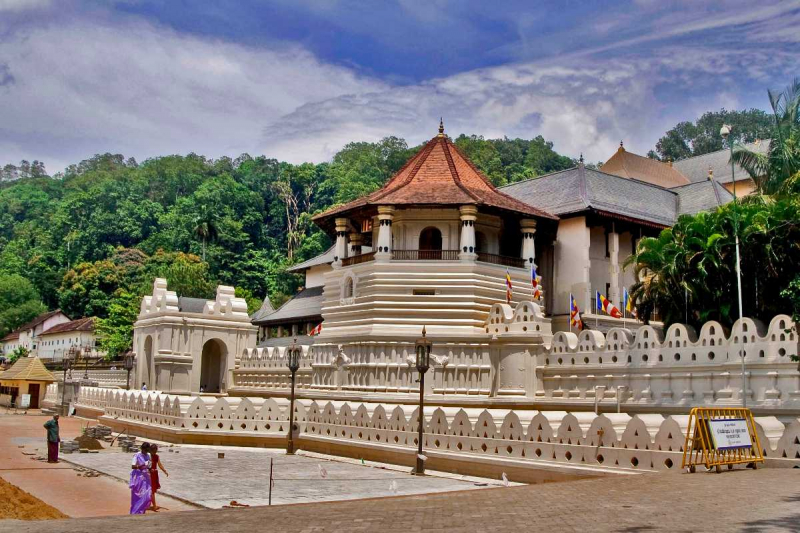
wikimedia 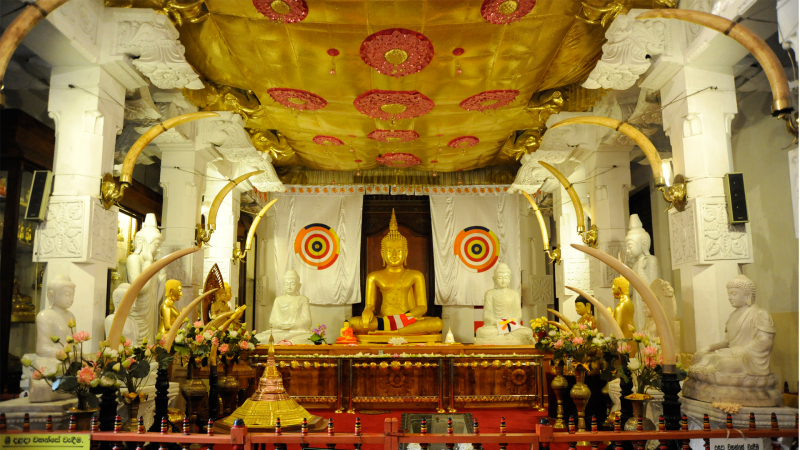
andBeyond -
At first glance, you'll think your drink was spiked with acid or that the Pad Thai you had for lunch was laced with magic mushrooms. As entertaining as that might be, this temple is what it is. You can rest assured that your mind is not conjuring up bizarre hallucinogenic visions. It's all true.
The gardens of this bizarre temple complex are decorated with pop culture heads hanging from trees, such as Batman and Gollum from Lord of the Rings. The temple's interior is equally perplexing, with popular Hollywood and music icons painted onto a great mural.
Similar to Gaudi's Sagrada Familia in Barcelona, the temple was created by Thai visual artist Charlemchai Kositpipat and will always be a work in progress.
As you get closer to the main temple, the craziness increases; be prepared for eerie hand sculptures emerging from the depths as well as bones, skulls, and other artwork that will make you secretly miss your mother.Getting there: 20 minutes southwest of Chiang Rai. Accessible via car, scooter, bus or Tuk Tuk.
Entry fee: 50 Baht ($1.50) per adult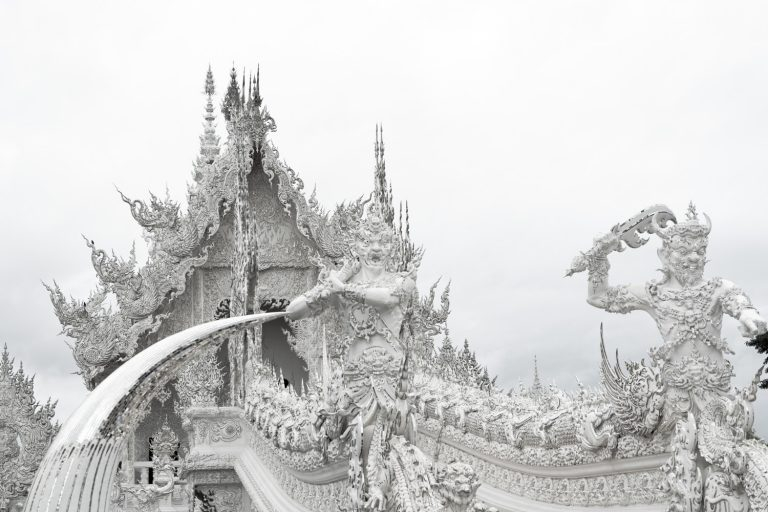
WAT RONG KHUN (WHITE TEMPLE), CHIANG RAI. ALL WHITE ERRRTHANG. - Pinterest 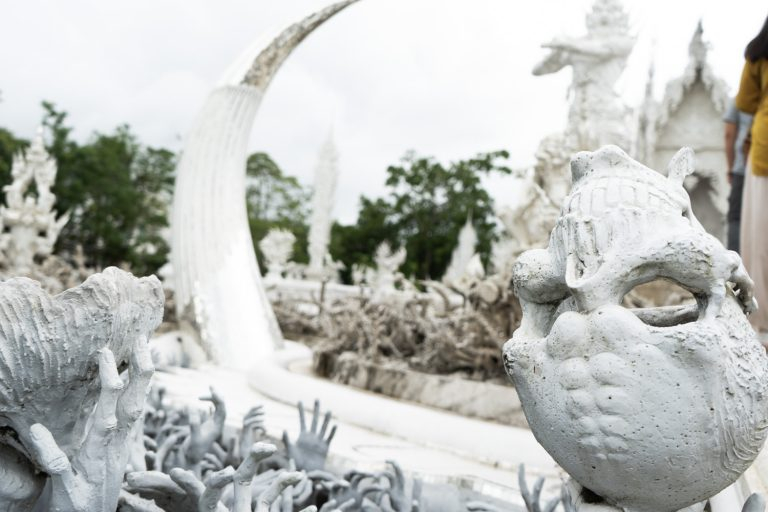
Pinterest -
Gyanganj, dubbed the Atlantis of Asia and also known as Shangri-La, Siddhashram, or Shambala, is a legendary location on Earth that is thought to exist in a dimension distinct from our own.
Locals think that immortal beings live in this secret paradise and subtly rule the world through meditation and prayer. This celestial kingdom, which is said to be nestled somewhere in the Himalayas, is only visible to those who have attained enlightenment or who have smoked a ton of ganja, according to Tibetan and Indian legend.
It's also possible that a yogi who was on a high reported this discovery. However, it is unavoidable that many people consider the Himalayas to be one of the most remote and mystical regions on Earth. From stories of astral projecting Sadhus perched on mountain peaks to goddesses residing in holy lakes, this region is shrouded in mystery and has the power to enthrall even skeptics.
Getting there: Via meditation, prayer, enlightenment, and perhaps, a joint somewhere in between.
Entry fee: Maybe… your soul?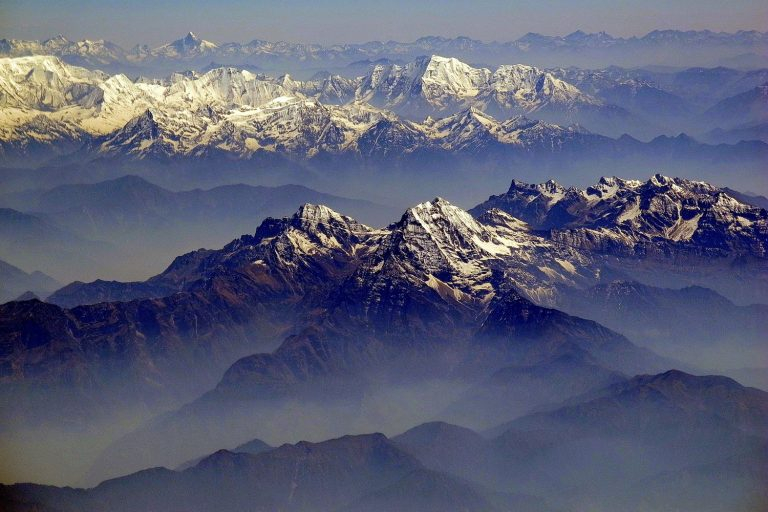
Pinterest 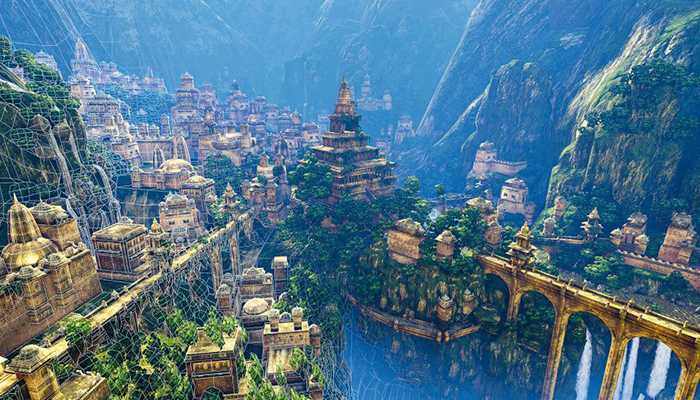
Holidify -
Emei Shan in central China is a must-see for both travelers and Buddhist pilgrims looking for a temple experience that is literally located above the clouds.
When you're 3080 meters above sea level at the Golden Summit, heaven will seem that much closer. The mystical mountain, the largest of the Four Sacred Buddhist Mountains, is visited on a daily basis by streams of pilgrims to pay their respects to their faith and the divinity that lies within.
If you want to avoid the crowds, you can stay at a super nice hotel on the outskirts of Mount Emei and make your way up first thing in the morning to see the sunrise over the temples at the Golden Summit.
Getting there: 1.5 hour high-speed train from Chengdu
Entry fee: 90¥ ($14 USD) from Dec-Jan, 185¥ ($28 USD) from Feb-Nov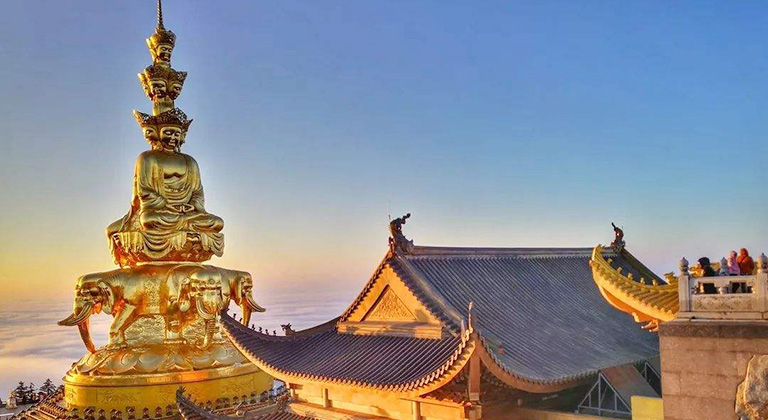
China Discovery 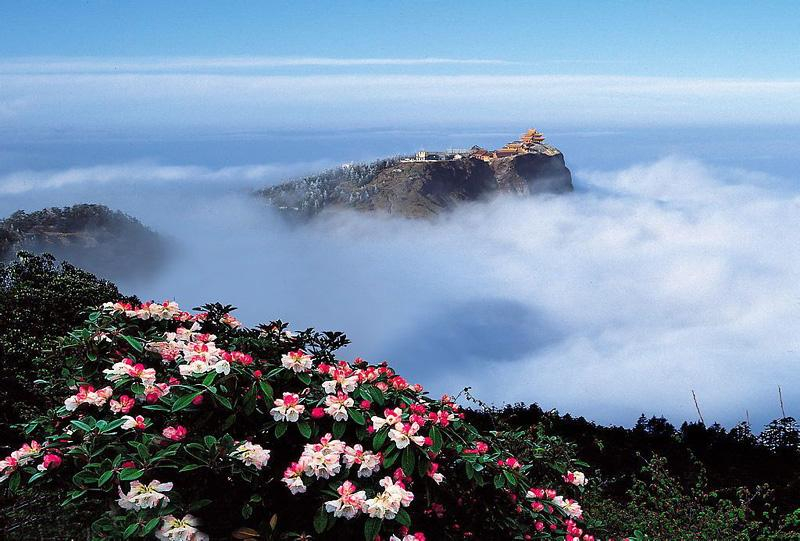
www.visitourchina.com -
The Mustang Caves in northern Nepal are one of the greatest archaeological mysteries in the world, consisting of about 10,000 mysteriously carved caves by humans.
Nobody is aware of who dug them, what they were used for, or even just how people climbed the vertical surface to reach them. Even experienced climbers using all the gear and equipment available in the twenty-first century find some of the caves to be inaccessible.
Some of them may have served as homes for people, while others may have served as tombs, according to archaeological theory.
View this stunning gallery of images captured by National Geographic climbers, explorers, and archaeologists.
Given that the Mustang Caves are situated in a very remote area of Nepal, it is advised that you take a guided tour if you decide to go.Getting there: Visitors can fly from Kathmandu to Pokhara and then take a flight to Mustang. They can take a taxi, bus, or rent a bike to get to Pokhara from Pokhara. The starting point of the Lo Kingdom in Upper Mustang is Jomsom, which can be reached on the Prithvi Highway in 6 to 8 hours.
Entry fee: US$ 500 for foreign visitors
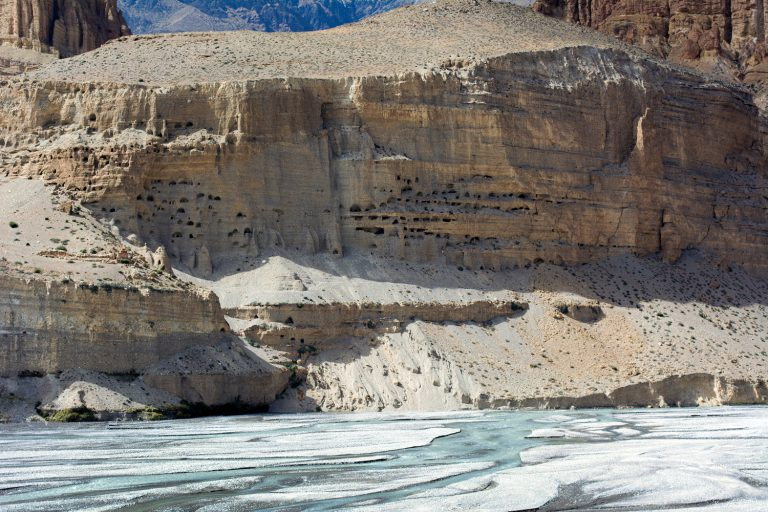
GRACE MARCELLA NORMAN 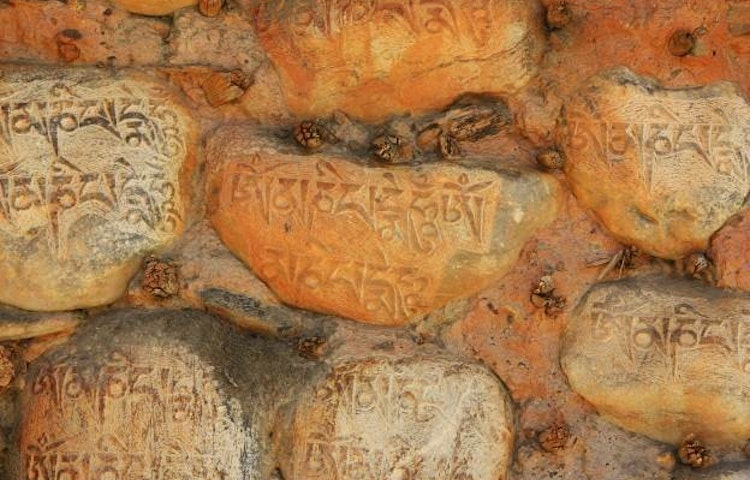
MT Sobek -
Mount Koya, widely regarded as one of Japan's most sacred Buddhist sites, is where Kobo Daishi, the founder of Shingon Buddhism, entered eternal meditation in 835 B.C.
His tomb and remains are still standing; monks who live on the mountain prepare daily meals and dress him in new robes every morning. Although his tomb is not open to the public, it begs the question of whether he is truly in a deep state of everlasting meditation, or if it is all a big fat myth.
On top of the mountain, at the Shukubo Koyasan Eko-in Temple, visitors can stay in traditional Japanese style while also participating in Buddhist morning services, the Goma fire ritual, and meditation sessions with the monks.
Getting there: Via train from Osaka (1.5 hours) or Kyoto (2.5 hours)
Entry fee: ¥1,500 ($14 USD) per adult for a Combination Ticket granting access to all temples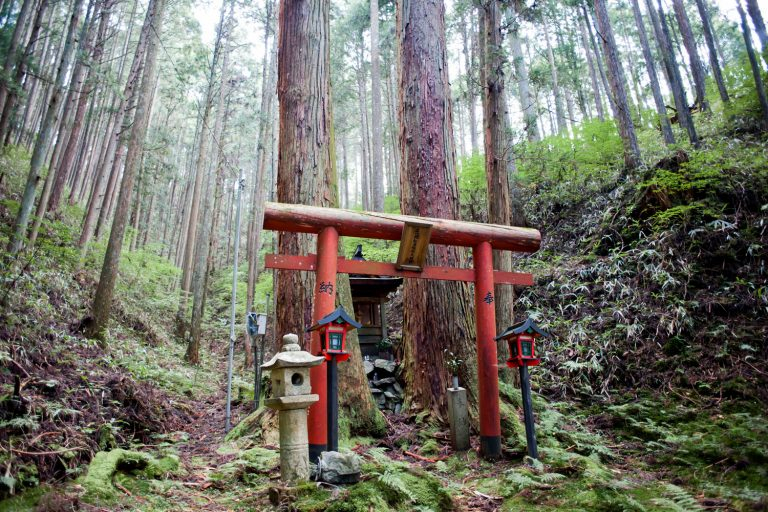
PETER RABBIT 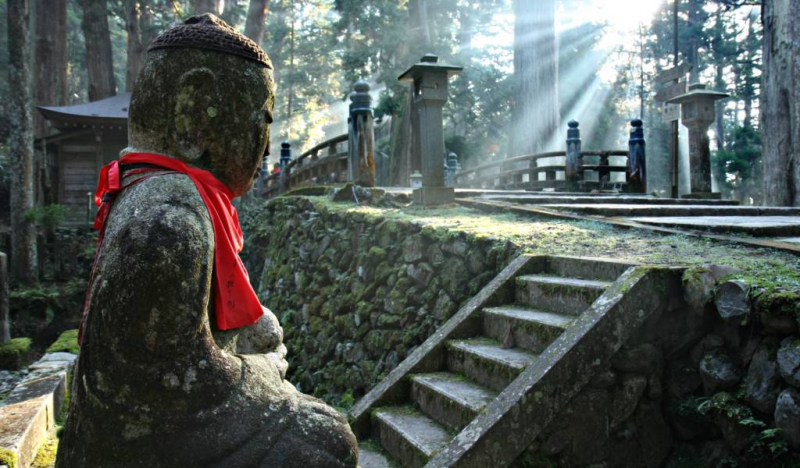
Japan Cheapo -
Bhutan, a small landlocked country between Tibet and India, is one of the last frontiers of an age-old Himalayan Buddhist culture. The stunning Tiger's Nest, one of Bhutan's most sacred and religious sites, is its postcard landmark.
Bhutanese believe that guru Rinpoche (AKA Padmasambhava) flew from Tibet to the mountainside on the back of a tigress to subdue a local demon. His body imprint, according to legend, can be found in the wall of a cave in a nearby monastery.
Depending on your fitness level, the hike to Tiger's Nest takes about 3-4 hours. Bhutan, it should be noted, can only be visited on a pre-arranged tour. However, be aware that visiting Bhutan is not cheap; the government charges a $250 USD per day tourist tax.
Getting there: The only two ways to get to the Tiger Nest Monastery are on foot or by horseback. From Paro, it takes just 25 minutes by car to get to the parking area from which you can begin the ascent to The Tiger's Nest Monastery.
Entry fee: 2000 BTN (~USD25)
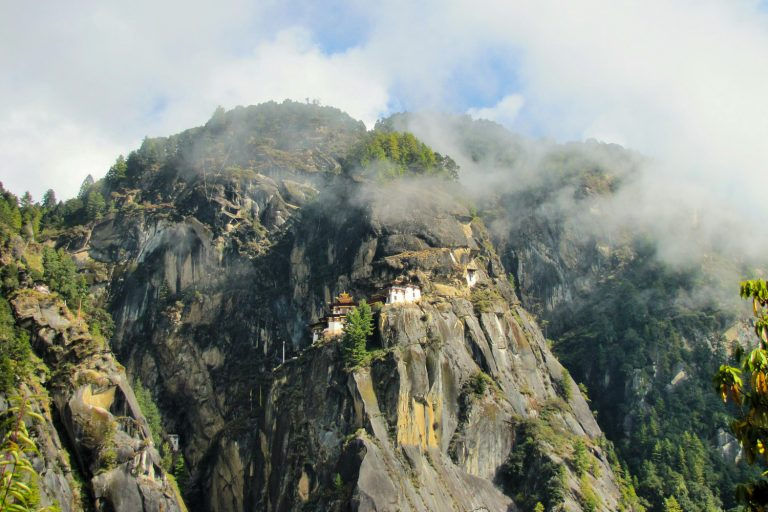
Pinterest 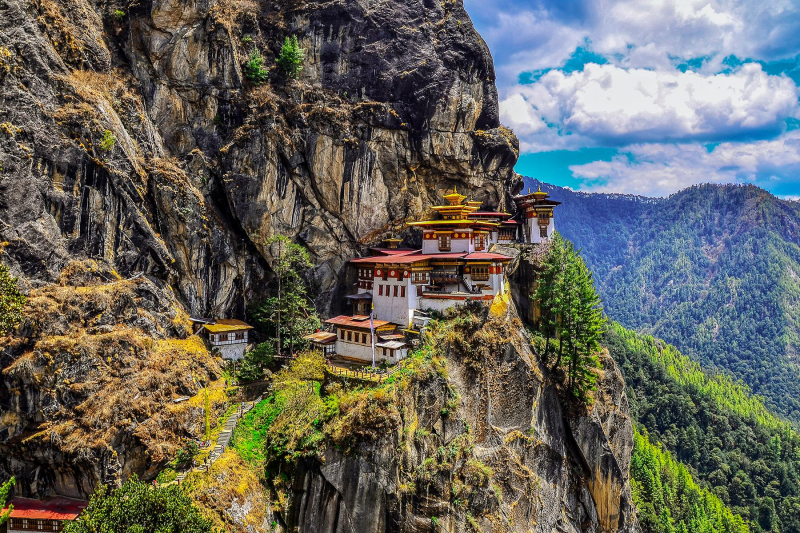
Fodors Travel Guide -
Golden Rock, a gravity-defying wonder of Myanmar, is perched precariously on the edge of a cliff about 160 kilometers northeast of Yangon, the country's capital.
A single hair from the Buddha is said to miraculously support the entire structure. According to legend, Buddha once went to see the hermit Taik Tha who lived atop the mountain, and gave him a lock of hair. After that, Taik Tha gave it to the King with the request that it be buried beneath a rock in the shape of the monarch. After that, the King managed to perfectly balance a rock that he had discovered underwater on the mountainside where the hermit had once lived.
It will never be known whether the legend is true or not, but myths aside, you can't deny that Kyaiktiyo is a marvel that defies physics.
Getting there: Accessible via bus from Yangon (3.5 hours) or Bago (2 hours)
Entry cost: 10,000MMK ($7 USD) per adult
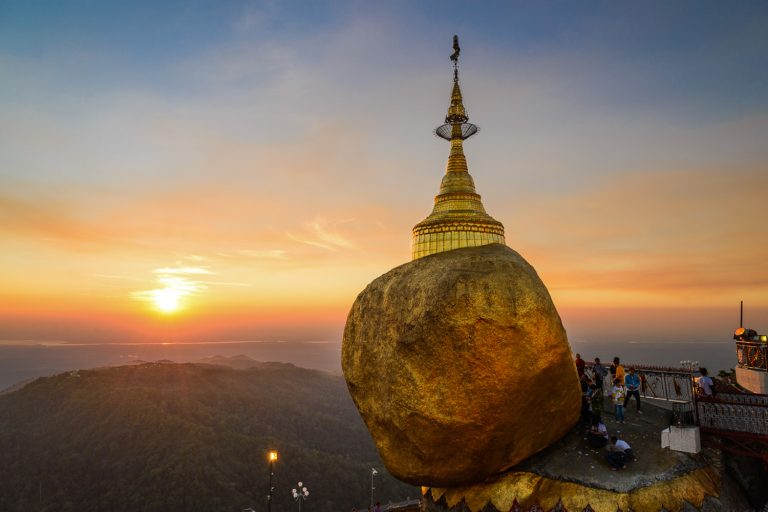
WASIN WAEOSRI 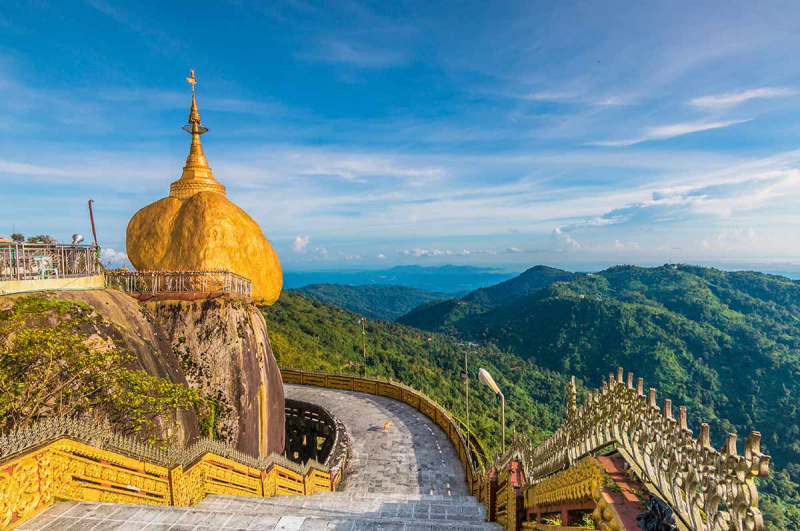
Pandaw Cruises -
Buddhists, Hindus, and Jains all revere and worship Mount Kailash, which is located in the westernmost part of the Tibetan plateau and has significant cultural and spiritual significance. The holy mountain is said to purify the soul and develop one's ability to see the divine, according to pilgrims.
Climbing is strongly discouraged on these mountains, which are thought to be the homes of the powerful Lord Shiva and his wife Parvati in Hinduism. Requests from mountaineers are typically turned down by the Chinese government in an effort to protect the mountain's sanctity.
So, what exactly do you do there? You walk around the base of this gleaming, snow-capped peak, admiring and worshiping the divine mountain from afar. Exactly the same. Right?
Some pilgrims will walk the entire 52km (32 miles) circuit in one day. But, let's be honest, most of us don't have fitness and dedication, so visitors are more likely to take up to three days to complete the strenuous journey. The road to the region where Mount Kailash stands is an expedition in and of itself, as it is inaccessible by plane, train, or bus. It takes days of rough, overland four-wheel driving from Tibet's capital, Lhasa, just to get there.Getting there: By bus, train, or air, Mount Kailash is virtually inaccessible. To get there pretty much requires an expedition. From Tibet's capital, Lhasa, it takes literally days of rough, uneven 4-wheel driving across the country. This adventure can only be started from Kathmandu or Lhasa with a guided tour.
Entry cost: around USD 140
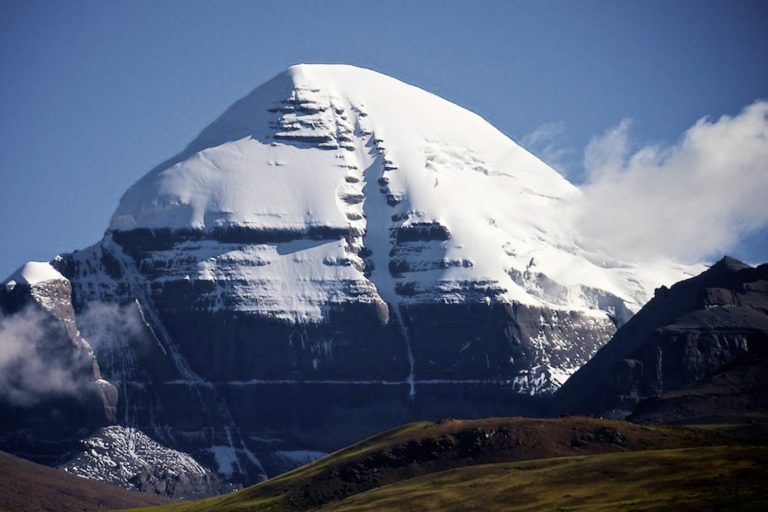
Pinterest 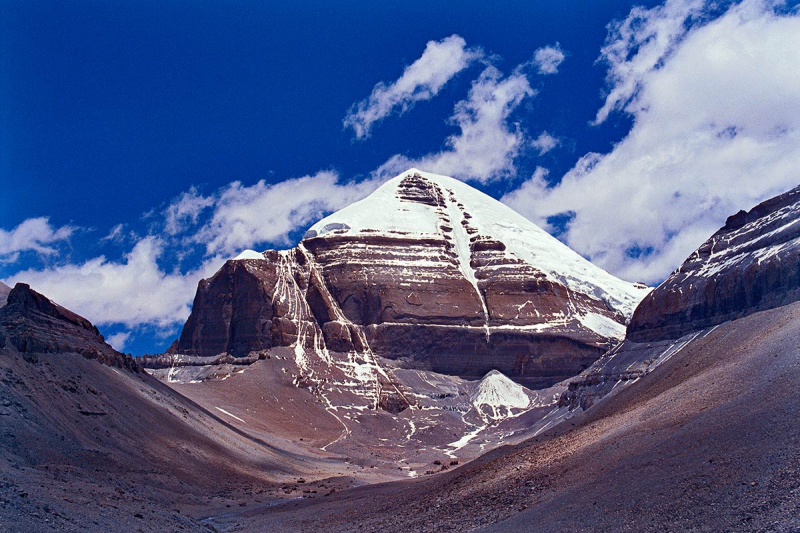
World Pilgrimage Guide

















